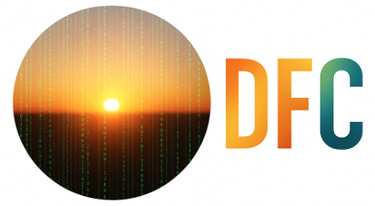The PayPal Story: From Innovative Idea to Digital Giant
It all started with a bold idea in the late 1990s - to create a simple, secure and fast way to transfer money online
CURIOSITIES
9/9/20253 min read


The History of PayPal: From Startup Merger to Global Fintech Leader
In a world where digital financial transactions have become the norm, it's easy to forget that this wasn't always the case. The story of PayPal is a fascinating case study in how an innovative idea, born in the late 90s, not only solved a problem of its time but paved the way for the era of e-commerce and fintech. The company's journey, from a merger of rival startups to its consolidation as a global giant, is a powerful example of vision, adaptation, and resilience. Along the way, PayPal not only challenged traditional financial conventions but also became a symbol of innovation and modernity in the financial sector.
The Origin of Two Rival Startups
PayPal's story begins with the union of two distinct companies. In 1998, Confinity was founded by Max Levchin, Peter Thiel, Luke Nosek, and Ken Howery. The initial idea was to focus on security and encryption software for handheld devices, such as the Palm Pilot. In parallel, in 1999, Elon Musk founded X.com, an online financial services company with the ambitious goal of becoming a digital 'superbank' that promised to redefine how people interacted with their finances. The two companies, competing in the nascent market of email payments, realized that a merger would be the best strategy to survive and scale quickly.
In March 2000, Confinity and X.com merged, forming the foundation of what we now know as PayPal. This move not only unified the creative and technological forces of both companies but also consolidated their position in the emerging digital payments market.
The Online Payments Revolution
The merger was the turning point. The new company, which eventually adopted the name PayPal, focused on a crucial need of the time: a secure and simple payment method for online transactions. The biggest catalyst for its growth was eBay, the rising online auction platform that was seeking an efficient payment solution. With the ease of sending money between users simply using an email address, PayPal quickly became the preferred payment method for eBay users, driving its exponential growth and setting a new standard for financial transactions on the internet.
In 2002, eBay recognized the value of the payment platform and acquired it for $1.5 billion. Under eBay's management, PayPal solidified its position as the leader in the online payments market, enhancing its security systems to combat fraud and expanding its global presence. This period of continuous growth cemented PayPal not just as a payment method, but as an integral part of online shopping for millions of users.
Independence and the Journey to Becoming a Leading Fintech
In 2015, after intense shareholder pressure, eBay spun off PayPal, transforming it into an independent, publicly-traded company. From then on, the company began a new phase of diversification and innovation. PayPal moved from being just eBay's digital wallet to becoming a payment platform for individuals, businesses, and merchants worldwide. This strategic shift allowed PayPal to focus on expanding its services and optimizing the user experience, addressing the rapidly changing market needs with the advent of new technologies.
Since its independence, PayPal has made several strategic acquisitions to expand its service portfolio. The purchases of companies like Venmo (peer-to-peer payments), Braintree (payment processing solutions), and iZettle (in-store retail payments) are examples of how the company seeks to remain relevant in a highly competitive and constantly evolving market. These acquisitions not only expanded its reach but also reinforced its commitment to continuous innovation.
Conclusion: A Platform Beyond the Transaction
The history of PayPal proves that disruptive innovation is not just about the technology itself, but about the ability to solve problems simply and scalably. From a startup with a promising idea, it transformed into a giant that redefines the financial sector, offering solutions that go far beyond a simple transaction. PayPal's journey shows that, in the digital age, true leadership is achieved through continuous adaptation and the relentless pursuit of meeting the ever-changing needs of its users.
Future innovations in the field of digital payments will certainly be guided by this example of resilience and creativity. What will be the next major innovation in the world of payments that follows PayPal's example?
Innovation
Technology and Digital Transformation.
contact us
Apprenticeship
digitalfuturechanges@gmail.com
© 2025. All rights reserved.
